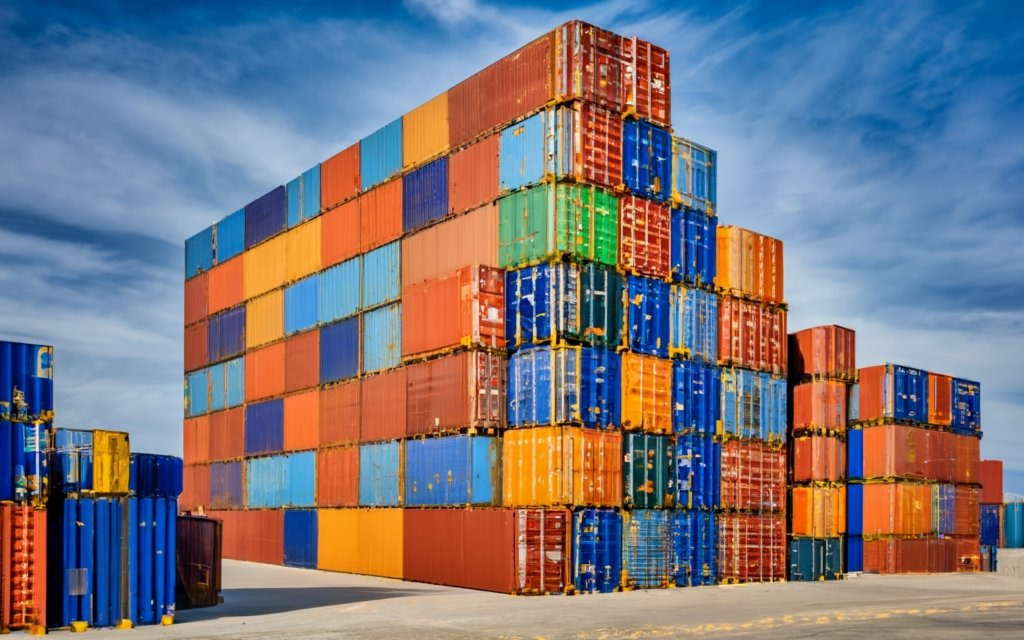Shipping from China to Canada is a common and lucrative business activity for many entrepreneurs, but it also comes with some challenges and expenses. If you are planning to import goods from China to Canada, you need to know how much it will cost you and what factors can affect the shipping costs. In this article, we will explain the different shipping methods, how to calculate import duties and taxes, what additional fees and charges you need to consider, and how to reduce your shipping costs and choose the right shipping company.
Factors affecting shipping costs from China to Canada

The cost of shipping from China to Canada depends on several factors, such as:
- The weight and volume of your shipment: The heavier and larger your shipment is, the more it will cost to ship. However, some shipping methods have a minimum charge per shipment, so you may pay the same amount for a small shipment as for a larger one.
- The shipping method you choose: There are different ways to ship goods from China to Canada, such as air freight, sea freight, rail freight, and courier services. Each method has its own advantages and disadvantages, and the cost varies depending on the speed, reliability, and convenience of the service.
- The distance between the origin and destination: The farther away your shipment is from China, the more it will cost to ship. For example, shipping to the east coast of Canada will be more expensive than shipping to the west coast, because of the longer transit time and higher fuel costs.
- The season and demand of the market: The cost of shipping can fluctuate depending on the supply and demand of the market. For example, shipping during peak seasons, such as holidays, festivals, or trade shows, can be more expensive than shipping during off-peak seasons, because of the higher demand and lower availability of shipping space and resources.
- The customs clearance and regulations of both countries: The cost of shipping can also be affected by the customs clearance and regulations of both China and Canada. You need to comply with the import and export rules and requirements of both countries, and pay the necessary duties, taxes, and fees for your shipment. If your shipment is delayed, inspected, or confiscated by customs, you may incur additional costs and penalties.
Understanding the different shipping methods

As mentioned above, there are different shipping methods you can choose from when shipping from China to Canada. Here is a brief overview of each method and its pros and cons:
- Air freight: Air freight is the fastest and most reliable way to ship goods from China to Canada, but it is also the most expensive. Air freight can take anywhere from 3 to 10 days to deliver your shipment, depending on the availability of flights, the transit time, and the customs clearance. Air freight is suitable for urgent, high-value, or perishable goods, or for small and light shipments that do not exceed 150 kg or 0.5 cubic meters. The cost of air freight is calculated based on the chargeable weight of your shipment, which is the greater of the actual weight or the volumetric weight (length x width x height / 6000).
- Sea freight: Sea freight is the cheapest and most eco-friendly way to ship goods from China to Canada, but it is also the slowest and least reliable. Sea freight can take anywhere from 15 to 40 days to deliver your shipment, depending on the shipping route, the transit time, and the customs clearance. Sea freight is suitable for large, heavy, or bulky goods, or for shipments that exceed 2 cubic meters. The cost of sea freight is calculated based on the container size of your shipment, which can be either 20 feet (28 cubic meters) or 40 feet (56 cubic meters). You can also choose to ship by less than container load (LCL), which means you share a container with other shippers and pay only for the space you use, or by full container load (FCL), which means you have a container exclusively for your shipment and pay a flat rate regardless of the space you use.
- Rail freight: Rail freight is a relatively new and emerging way to ship goods from China to Canada, but it is also a fast and cost-effective option. Rail freight can take anywhere from 10 to 20 days to deliver your shipment, depending on the rail network, the transit time, and the customs clearance. Rail freight is suitable for medium-sized, non-perishable, or durable goods, or for shipments that range from 2 to 20 cubic meters. The cost of rail freight is calculated based on the volume of your shipment, which is measured in cubic meters.
- Courier services: Courier services are the most convenient and flexible way to ship goods from China to Canada, but they are also the most expensive for large or heavy shipments. Courier services can take anywhere from 2 to 7 days to deliver your shipment, depending on the service level, the transit time, and the customs clearance. Courier services are suitable for small, light, or urgent goods, or for shipments that do not exceed 30 kg or 0.2 cubic meters. The cost of courier services is calculated based on the chargeable weight of your shipment, which is the greater of the actual weight or the volumetric weight (length x width x height / 5000).
Calculating import duties and taxes

When you ship goods from China to Canada, you need to pay import duties and taxes to the Canadian customs authorities. The amount of import duties and taxes depends on the following factors:
- The value of your shipment: The value of your shipment is the total amount you paid for the goods, including the purchase price, the shipping cost, and the insurance cost. You need to declare the value of your shipment on the commercial invoice, which is a document that describes the details of your transaction and shipment. The value of your shipment is used to calculate the customs value, which is the basis for the import duties and taxes.
- The classification of your goods: The classification of your goods is the code that identifies the type, nature, and characteristics of your goods. You need to classify your goods according to the Harmonized System (HS), which is a standardized system of codes and descriptions used by most countries in the world. The classification of your goods is used to determine the applicable tariff rate, which is the percentage of the customs value that you need to pay as import duties.
- The origin of your goods: The origin of your goods is the country where your goods were produced, manufactured, or grown. You need to prove the origin of your goods by providing a certificate of origin, which is a document that certifies the origin of your goods and the compliance with the rules of origin. The origin of your goods is used to determine the eligibility for preferential tariff treatment, which is a lower or zero tariff rate that applies to certain goods from certain countries or regions under certain trade agreements. For example, Canada has a free trade agreement with China, which means that some goods from China can enjoy a lower or zero tariff rate when imported to Canada.
To calculate the import duties and taxes for your shipment, you need to multiply the customs value by the tariff rate, and then add the goods and services tax (GST), which is a 5% tax that applies to most goods and services in Canada. For example, if you import a shipment of clothing from China to Canada with a value of $1,000, a classification of 6104.43.00, and an origin of China, you need to pay the following import duties and taxes:
- Customs value = $1,000
- Tariff rate = 0% (under the free trade agreement)
- Import duties = $1,000 x 0% = $0
- GST = ($1,000 + $0) x 5% = $50
- Total import duties and taxes = $0 + $50 = $50
Additional fees and charges to consider

Besides the import duties and taxes, you also need to consider some additional fees and charges that may apply to your shipment, such as:
- The shipping cost: The shipping cost is the amount you pay to the shipping company for transporting your goods from China to Canada. The shipping cost depends on the shipping method, the weight and volume of your shipment, the distance and route, the season and demand, and the service level. You can compare different shipping companies and get quotes online to find the best shipping option for your needs and budget.
- The insurance cost: The insurance cost is the amount you pay to the insurance company for covering the risk of loss or damage to your goods during transit. The insurance cost depends on the value and nature of your goods, the shipping method, and the insurance coverage. You can choose to buy insurance from the shipping company or from a third-party insurance provider. You can also choose to waive the insurance, but this means you will bear the full responsibility and liability for any loss or damage to your goods.
- The customs clearance fee: The customs clearance fee is the amount you pay to the customs broker or agent for handling the customs clearance process for your shipment. The customs clearance process involves preparing and submitting the required documents, paying the import duties and taxes, and complying with the customs regulations and requirements. The customs clearance fee depends on the complexity and value of your shipment, the number and type of documents, and the service level. You can choose to hire a customs broker or agent, or you can handle the customs clearance yourself, but this requires more time and knowledge.
- The storage fee: The storage fee is the amount you pay to the shipping company or the warehouse for storing your goods before they are delivered to your destination. The storage fee depends on the size and weight of your shipment, the duration and location of the storage, and the availability and demand of the storage space. You can avoid or reduce the storage fee by arranging the delivery of your goods as soon as possible after they arrive in Canada, or by choosing a shipping company or a warehouse that offers free or low-cost storage services.
- The delivery fee: The delivery fee is the amount you pay to the shipping company or the courier for delivering your goods from the port or the airport to your door. The delivery fee depends on the distance and mode of transportation, the size and weight of your shipment, and the service level. You can save on the delivery fee by choosing a shipping company or a courier that offers free or low-cost delivery services, or by picking up your goods yourself from the port or the airport.
Tips for reducing shipping costs.

Shipping from China to Canada can be expensive, but there are some tips and tricks you can use to reduce your shipping costs, such as:
- Compare different shipping options: Before you ship your goods, you should compare different shipping options and get quotes from different shipping companies. You should consider the cost, speed, reliability, and convenience of each option, and choose the one that best suits your needs and budget. You can use online platforms and tools to compare and book different shipping options easily and conveniently.
- Negotiate with the suppliers and the shipping companies: You can try to negotiate with the suppliers and the shipping companies to get a better deal on your shipment. You can ask for discounts, free shipping, or other incentives, especially if you have a large or regular order, or if you have a long-term relationship with them. You can also leverage your bargaining power by joining a group of buyers or shippers who have similar or complementary needs, and share the shipping costs and benefits.
- Optimize your packaging and loading: You can optimize your packaging and loading to reduce the weight and volume of your shipment, and thus the shipping cost. You can use lightweight and durable materials, pack your goods tightly and efficiently, and avoid any unnecessary or excess packaging. You can also use standard-sized boxes or pallets, and stack and load them properly, to make the best use of the shipping space and avoid any wasted or unused space.
- Consolidate your shipments: You can consolidate your shipments by combining multiple orders or products into one shipment, or by using a freight forwarder or a consolidator who can do it for you. This way, you can save on the shipping cost per unit, and also reduce the risk of loss or damage to your goods. However, you should also consider the trade-off between the shipping cost and the delivery time, as consolidating your shipments may delay the delivery of your goods.
- Plan ahead and avoid peak seasons: You can plan ahead and avoid peak seasons when shipping your goods, as the shipping cost can be higher and the shipping space can be lower during these times. You should try to ship your goods during off-peak seasons, such as winter or spring, or during weekdays or mid-months, when the demand and the competition are lower. You should also avoid shipping your goods during holidays, festivals, or trade shows, when the demand and the competition are higher.
Choosing the right shipping company

Choosing the right shipping company is crucial for shipping your goods from China to Canada successfully and cost-effectively. You should look for a shipping company that can offer you the following:
- A competitive and transparent price: You should look for a shipping company that can offer you a competitive and transparent price for your shipment, without any hidden or extra fees or charges. You should also compare the price with the value and quality of the service, and make sure you get what you pay for.
- A reliable and fast service: You should look for a shipping company that can offer you a reliable and fast service for your shipment, without any delays, errors, or damages. You should also check the reputation and track record of the shipping company, and read the reviews and feedback from other customers.
- A convenient and flexible service: You should look for a shipping company that can offer you a convenient and flexible service for your shipment, without any hassle or stress. You should also check the availability and accessibility of the shipping company, and the communication and customer service they provide.
- A comprehensive and customized service: You should look for a shipping company that can offer you a comprehensive and customized service for your shipment, without any limitations or restrictions. You should also check the range and diversity of the shipping options and solutions they provide, and the ability and willingness to cater to your specific needs and preferences.
Tracking and managing your shipment

Tracking and managing your shipment is important for shipping your goods from China to Canada safely and smoothly. You should do the following:
- Get a tracking number and a tracking link: You should get a tracking number and a tracking link from the shipping company or the courier, which can help you track and monitor the status and location of your shipment online. You should also share the tracking number and the tracking link with your customers or recipients, if applicable, so they can also track and monitor their orders or deliveries.
- Check the tracking updates and notifications: You should check the tracking updates and notifications regularly and frequently, which can help you stay informed and updated on the progress and condition of your shipment. You should also pay attention to any alerts or warnings, such as delays, exceptions, or issues, and take the necessary actions or precautions accordingly.
- Contact the shipping company or the courier: You should contact the shipping company or the courier if you have any questions, concerns, or problems regarding your shipment, such as missing, damaged, or incorrect goods, or customs clearance or delivery issues. You should also contact the shipping company or the courier if you need to make any changes or adjustments to your shipment, such as changing the address, the delivery date, or the service level. You should always keep the contact information and the confirmation number of the shipping company or the courier handy and accessible.
Conclusion
Shipping from China to Canada can be a complex and costly process, but it can also be a rewarding and profitable one. By understanding the different shipping methods, calculating the import duties and taxes, considering the additional fees and charges, reducing the shipping costs, choosing the right shipping company, and tracking and managing your shipment, you can ship your goods from China to Canada successfully and cost-effectively. We hope this article has helped you learn more about how much it costs to ship from China to Canada, and how to optimize your shipping process and experience. If you need more help or guidance, please feel free to contact us anytime. We are happy to assist you with your shipping needs and goals. Thank you for reading and happy shipping!




